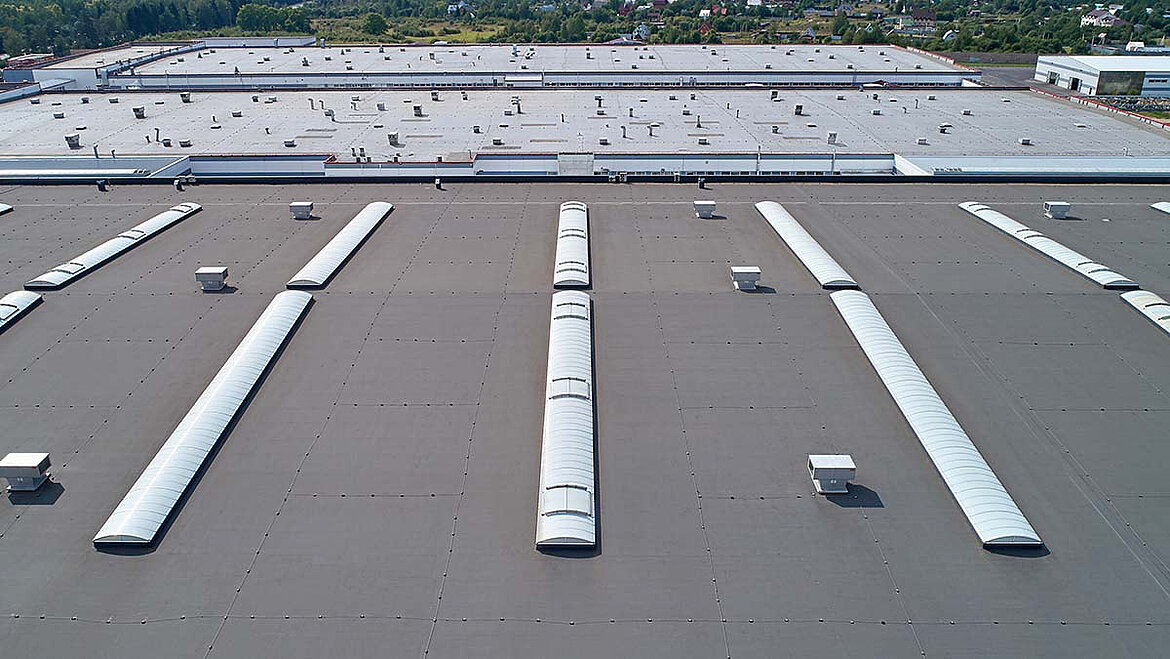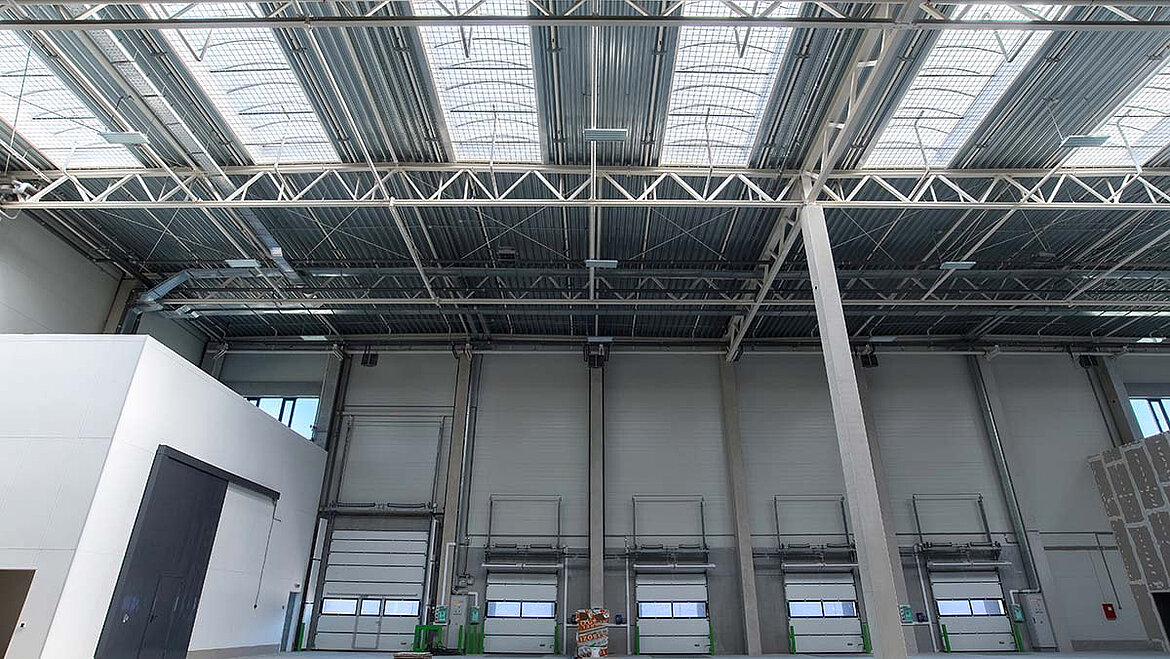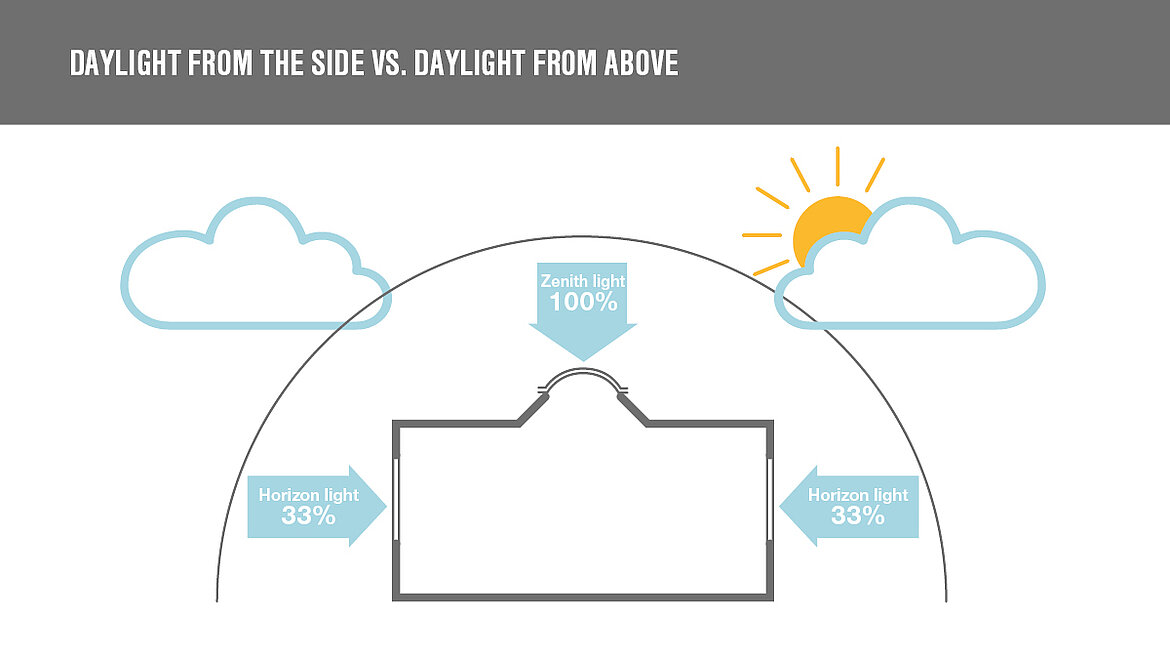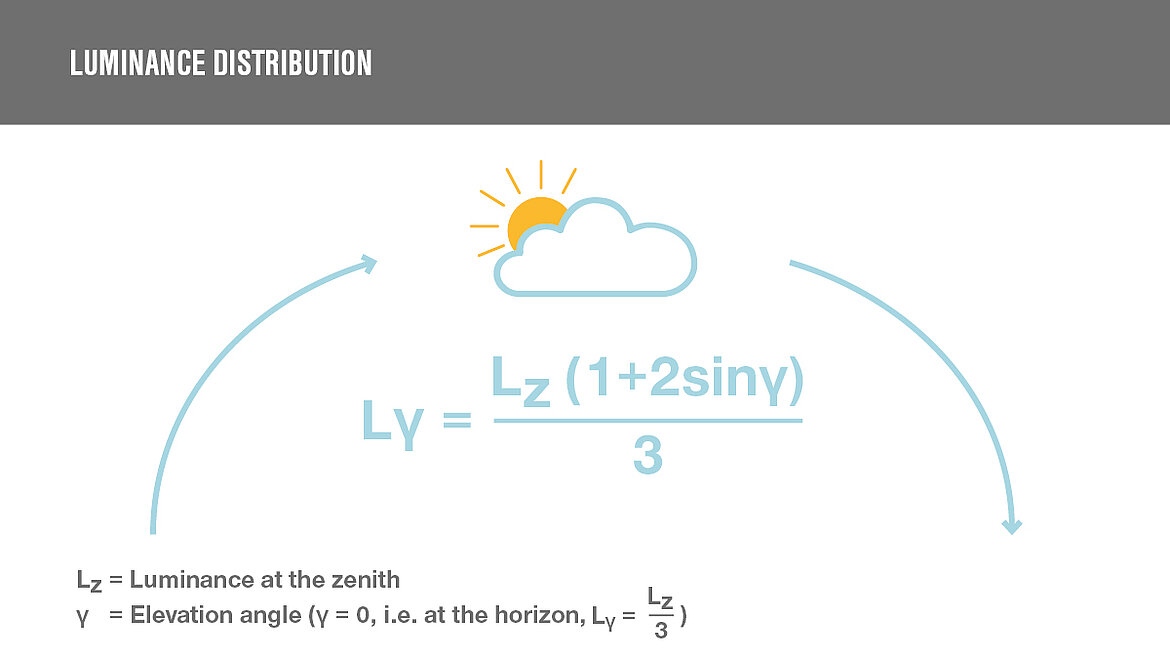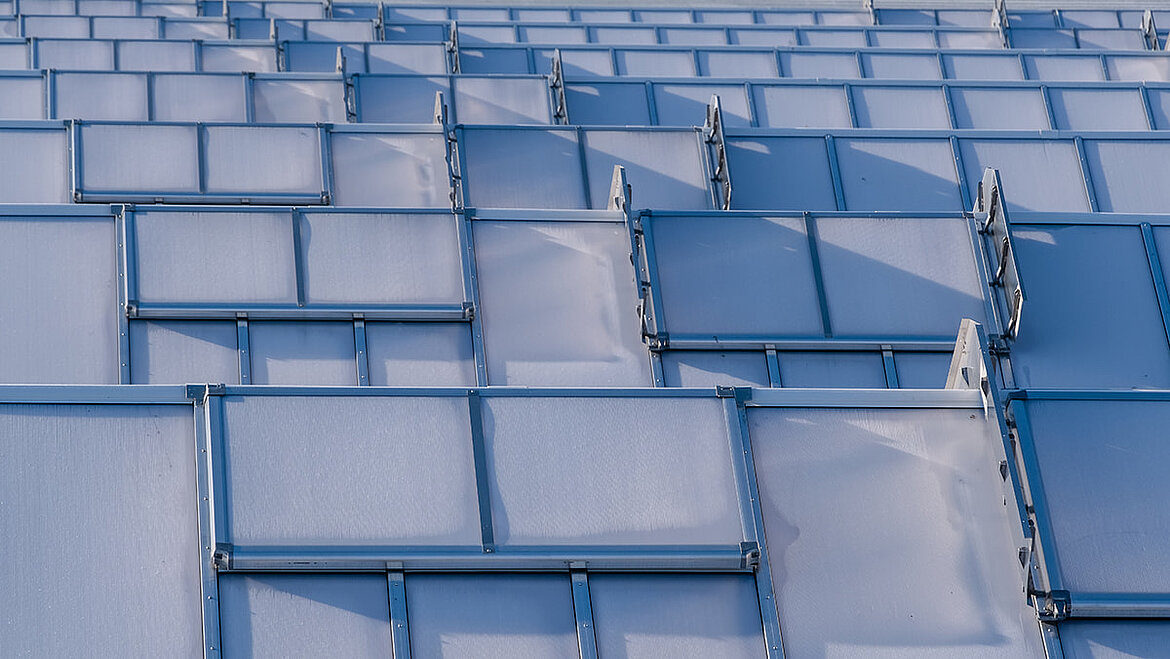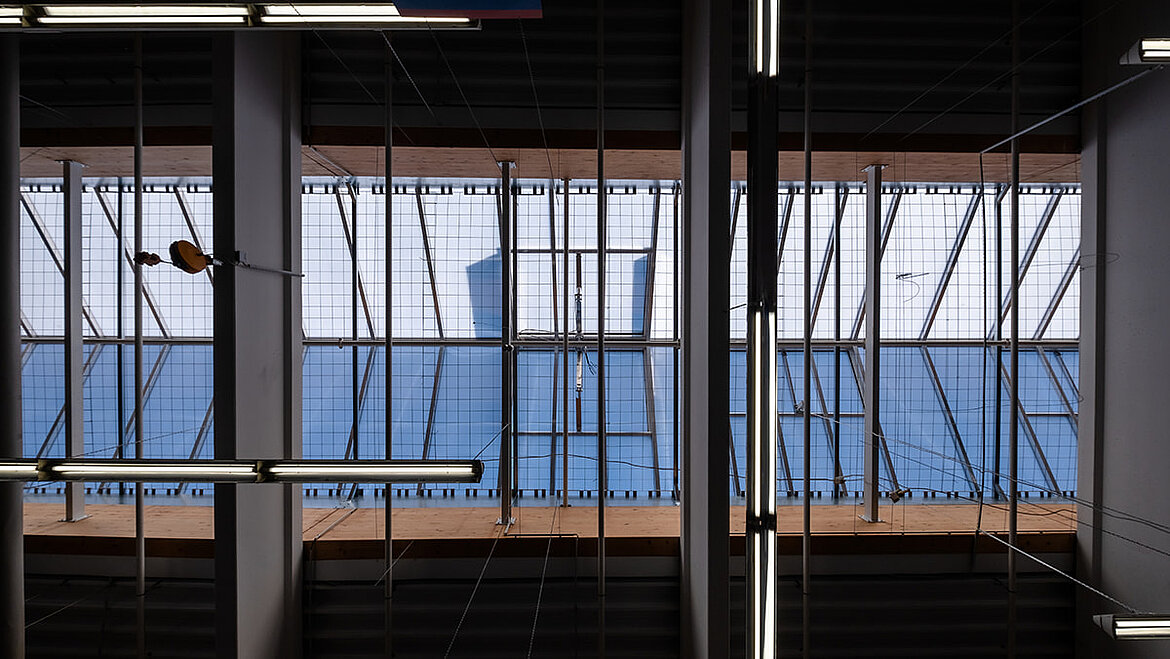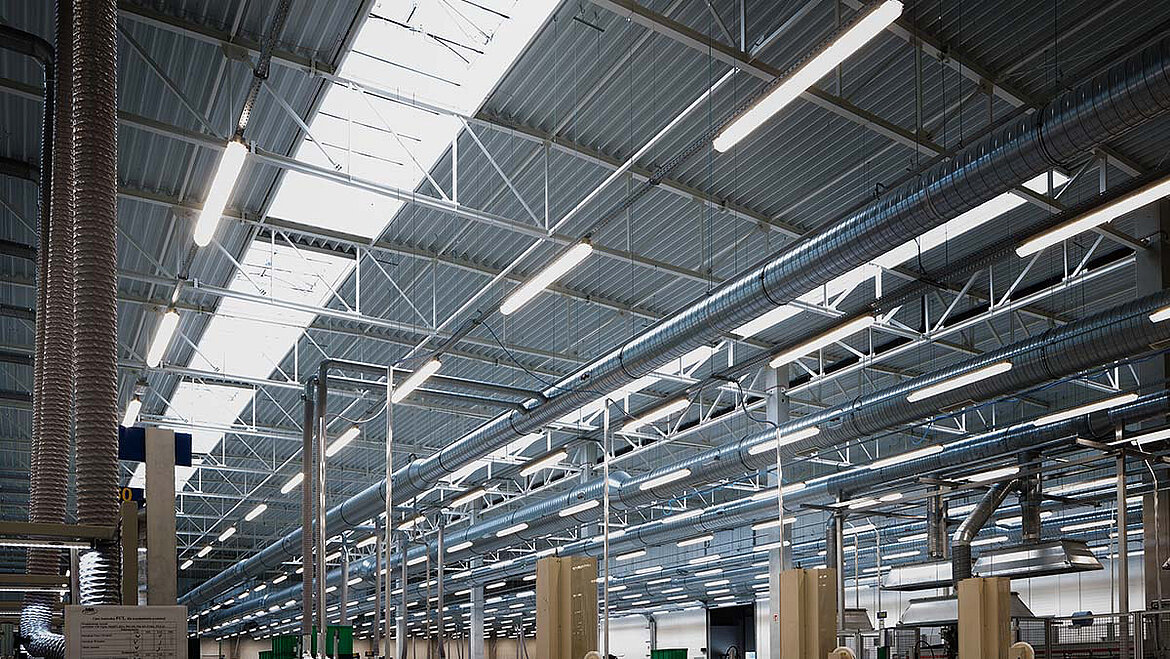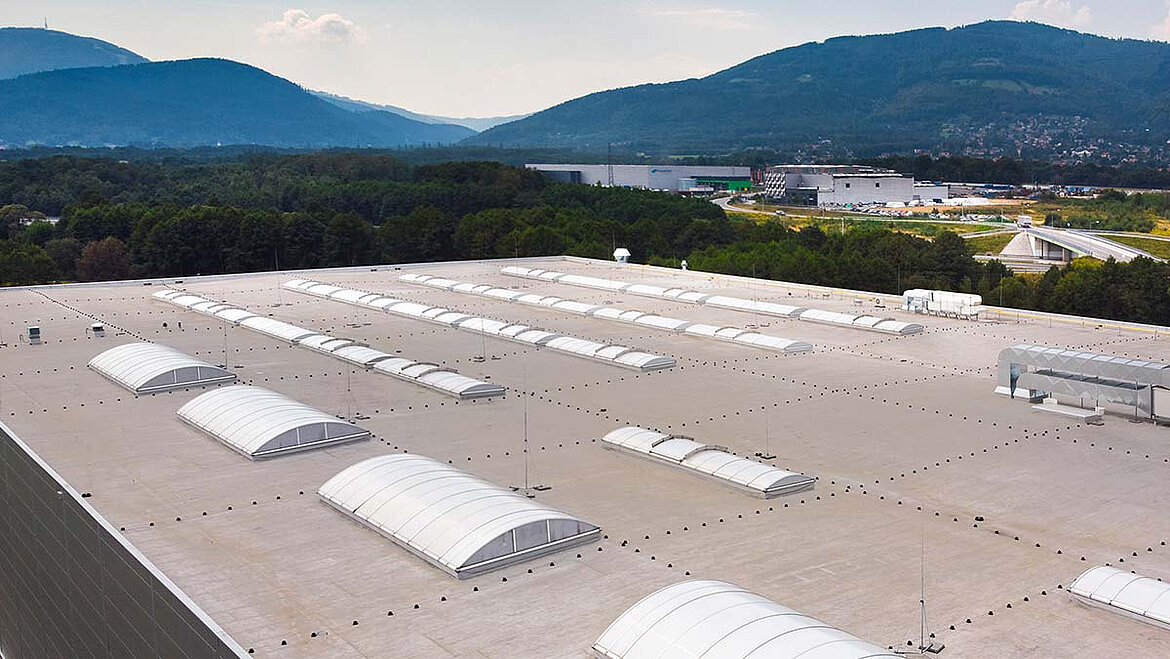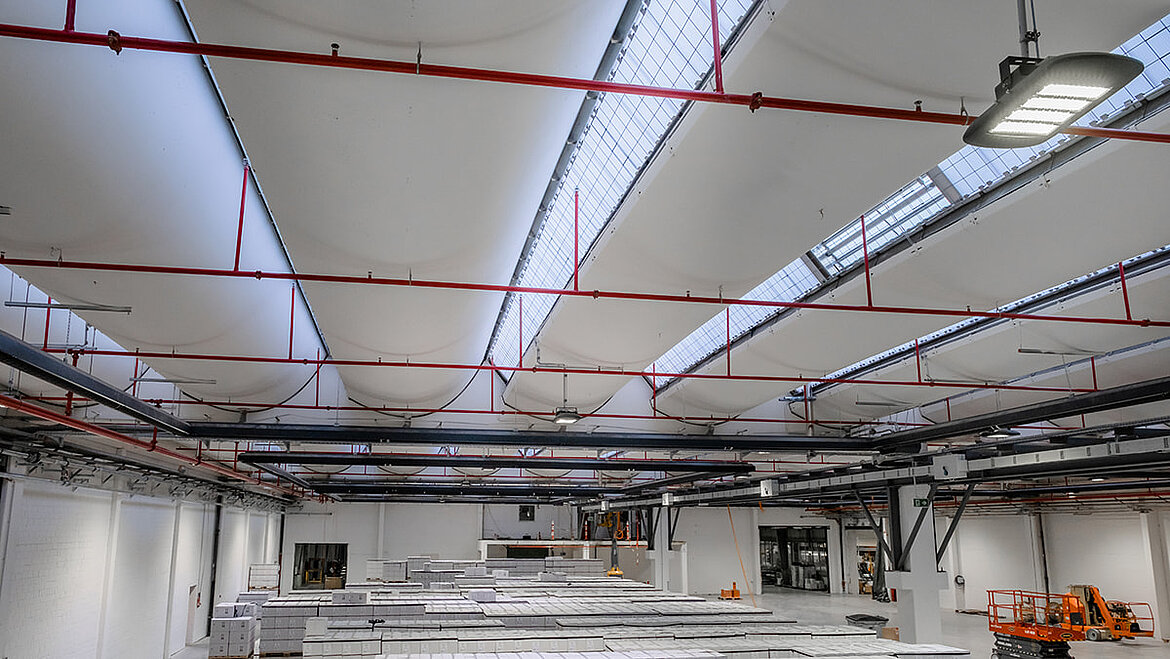Providing sufficient and economical daylight to interiors of any size is the task of many architects and builders. Skylights are often used for this purpose. Continuous rooflights are an ideal solution for industrial halls in particular because they bring daylight into the buildings. It can be said that continuous rooflights are mainly installed in non-residential buildings. Sports facilities, warehouses and shopping markets are also often equipped with this type of skylight.
To install continuous rooflights, large areas are often required that a normal detached house does not even offer. This is because, on average, a continuous rooflight is 2.80 m wide and a maximum of 6.00 m wide and can be any length. It becomes cheaper, and therefore more profitable, the longer it is built. Therefore, it is a popular way to bring light into the interior of buildings, especially in industrial halls.
Benefits of a continuous rooflight
Continuous rooflights are therefore the optimal way of flooding a building with light and air. The greatest advantage of a continuous rooflight for industrial halls is clearly the high daylight incidence. In addition to natural lighting, continuous rooflights are also used for natural ventilation. The skylight is thus an intelligent building energy management system. This means that many continuous rooflights offer efficient thermal insulation with European approval. They therefore contribute to an optimal indoor climate. In addition, continuous rooflights can be combined with smoke and heat exhaust ventilation units to ensure rapid smoke extraction in the event of a fire.
Daylight from the side vs. daylight from above
Particularly in large cities or densely built-up industrial areas, ordinary windows on the side of a building often carry the risk that the amount of incoming light can be reduced by obstructions. Other houses, industrial halls, trees, bushes, parked trucks or mountains and hills are referred to as obstructions. These obstructions reduce the incidence of light because the area of possible light sources, i.e. the sky, is reduced and thus less light can reach the inside.
Natural daylight that enters the building interior through openings in roof surfaces is beneficial because of many aspects. One reason is that the brightness of the zenith light is three times that of ordinary side light. Relatively small openings in the roof offer the room just as much light as noticeably larger side windows. So, to achieve the same illumination level through normal side windows as with skylights, a much larger façade window area is needed.
But why is light from above actually brighter than light from the side? The reason for this is the luminance drop and its calculation. The basis for all daylight calculations is an evenly overcast sky. However, a uniformly overcast sky does not automatically mean uniform brightness. So, if you take the brightness in the zenith, i.e. directly vertically from above, the light reaches 100%. The lower the angle of incidence, the further the brightness decreases.
Thus, in a uniform sky, only about one third of the brightness from the zenith position is reached at the horizon. These values can be considered irrespective of the season. The luminance drop is based on the rotationally symmetrical luminance distribution:
In simple terms, that means: Light from above is brighter. The higher the angle of incidence, the more light is let into the building. The brightness of a room decreases drastically with increasing room depth. This means that the further away you are from a side window, for example, the darker the workplace becomes and work is only possible with an additional, artificial light source.
However, natural daylight incidence through openings in roof surfaces not only has advantages for the function of "lighting", as the openings also have the function for natural ventilation and smoke exhaust ventilation. Consequently, energy can be saved here because natural ventilation systems use the outside air, sustainably improve the indoor climate and thus reduce energy costs. If the ventilation systems are also coupled with heating, cooling and sun protection, all processes can be coordinated with each other to create an optimal, energy-efficient indoor climate throughout the building.
New construction vs. refurbishment of continuous rooflights
When installing continuous rooflights, a distinction must be made between the renovation of existing openings in the roof surface and the new construction of a building.
Installation of a continuous rooflight in the course of a new construction
When constructing a new building, the daylight engineer first determines the necessary opening area. What matters here is the shape of the room and, above all, its use. With this knowledge, the construction of the roof including the individual light surfaces is planned. In the construction industry, it can be observed that many small continuous rooflights are installed, although a few large ones are more economical at first glance. These have significantly lower costs in terms of the investment area per square metre, the installation costs and the replacement and sealing of the units.
But why is it then preferable to install several small continuous rooflights? The answer: Fire protection. Many, small continuous rooflights offer the advantage of having many small NSHEVs (natural smoke and heat exhaust ventilation units) built in. These built-in NSHEVs can be replaced individually in the event of a defect, which in turn saves costs and guarantees safety.
Renovation of existing roof openings
Since existing roof openings are often to be retained during renovation for cost reasons, the existing opening usually determines the type, number and size of the continuous rooflights to be installed. After an extensive analysis of this existing roof opening, the daylight engineer now plans the continuous rooflight. Renovation experts such as LAMILUX can be of great help here and make customised continuous rooflights.
Maintenance of continuous rooflights
Cleaning windows is one of the general household tasks. But what about glass surfaces on industrial hall roofs? The built-in skylights have – as previously mentioned – primarily the function of providing light. But for this, they require regular maintenance. Although the smooth glass surfaces usually have a certain self-cleaning effect, dirt gradually settles. After a few years, they are dirty both inside and out and allow only a small part of the daylight that is actually possible into the halls. The German Workplace Directive (ArbStättV Annex 1 point 3.4.) stipulates that workplaces must have sufficient daylight. Any dirt on the glass surfaces or ageing of the material can significantly reduce this daylight incidence. Consequently, continuous rooflights must be regularly inspected and defects rectified.
Cleaning of continuous rooflights
In general, continuous rooflights consist of the continuous rooflight element, upstands, accessories such as fittings, and an electric, pneumatic or manual drive for daily ventilation. All these components need to be cleaned regularly.
Continuous rooflight elements
For the most part, these elements are made of the resilient, thermoplastic polycarbonate (PC). GRP (glass-fibre reinforced plastic) is used for special applications due to its properties as a thermoset. These materials have the special property of having a smooth and, more importantly, non-porous surface. Dirt usually has no chance of settling here. However, if the continuous rooflight elements do need cleaning, the surfaces can be wiped with water and a soft cloth or sponge. If the continuous rooflights are to be cleaned very thoroughly, a solvent-free antistatic composite cleaner that is specially approved for composites is usually recommended. Under no circumstances, however, should the surfaces be cleaned dry, as this can easily cause scratches. In addition, abrasive cleaners are not recommended in any event, as this can also contribute to surface scratches.
Profile frame
The profile frame of the continuous rooflight opening elements is made of composite material. Therefore, cleaning is also recommended here as with conventional composite window frames.
Supporting Structure
The supporting structure of the rooflight dome is made of aluminium and is easily cleaned with (warm) water and without chemicals.
Seals
The seals, which are responsible for the water and air tightness of the elements, are only to be checked for tight closure. If anything seems wrong, they must be renewed or maintained.
Electronic components
In the course of maintenance, all electronic components should be checked too. These can be sun and rain sensors, for example, which are exposed to all weather conditions. It is therefore essential that the surfaces of these components are cleaned of any dirt particles or even bird droppings, as this can impair the functionality of this component in the worst case.
Continuous rooflight maintenance
Consequently, continuous rooflights must be checked regularly once they are installed. As a preventive maintenance measure, skylights must be maintained in the same way as continuous rooflights. These measures can be divided into three parts: maintenance, inspection and repair. DIN 31051 covers all measures that contribute to maintaining the target state of a system. The standard also deals with inspection, i.e. the measures for determining and assessing the actual state of the system. All measures for restoring the planned use, such as the replacement of structural components, are set out in the DIN 1055-100 standard.
But what does continuous rooflight maintenance entail?
According to DIN EN 12963, regular maintenance of continuous rooflights must include the following:
- Proper cleaning of all construction elements
- Testing of all components
- Possible replacement of defective or porous components
- Checking, maintaining and replacing the accessories
- Moving accessories such as hinges, opener fittings, opener units are to be checked for functionality and lubricated if necessary
- Maintenance of the electrical opening devices
The enrichment for industrial halls
Continuous rooflights not only provide a high level of daylight in industrial halls, they also supply the workers with fresh air at the same time. The result is more balanced and motivated employees because sufficient daylight has a positive effect on people's health, as you can read in more detail in this article. In the event of a fire, continuous rooflights also provide natural smoke extraction and thus help to save lives – this is precisely what an article on the fire protection summarises. Nevertheless, there are a few things to consider when installing skylights. And even after installation in the industrial hall, the skylights must not be neglected. Regular inspection, cleaning and maintenance is essential to ensure both daylight penetration and the necessary functionality in case of fire. In fact, you can find out how important a functioning SHEV is in the event of a fire in our article Fire protection in accordance with DIN 18234 – Preventing the spread of fire.


